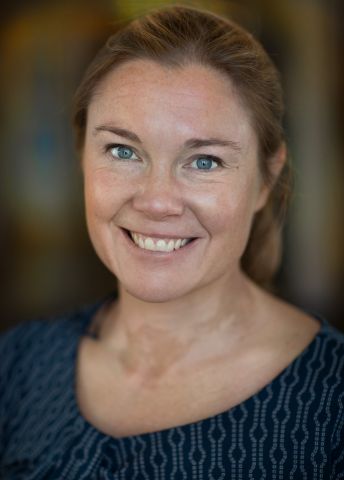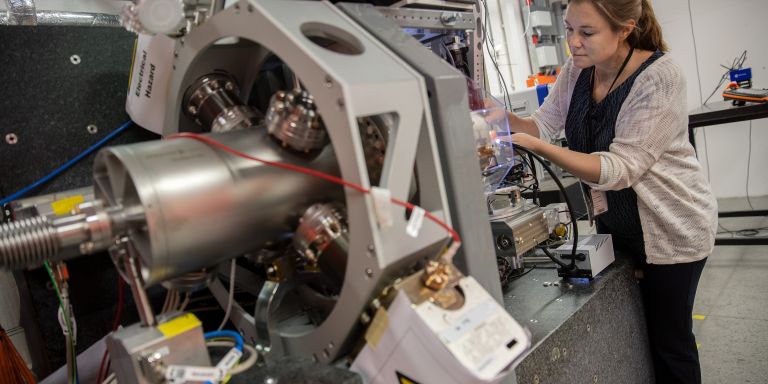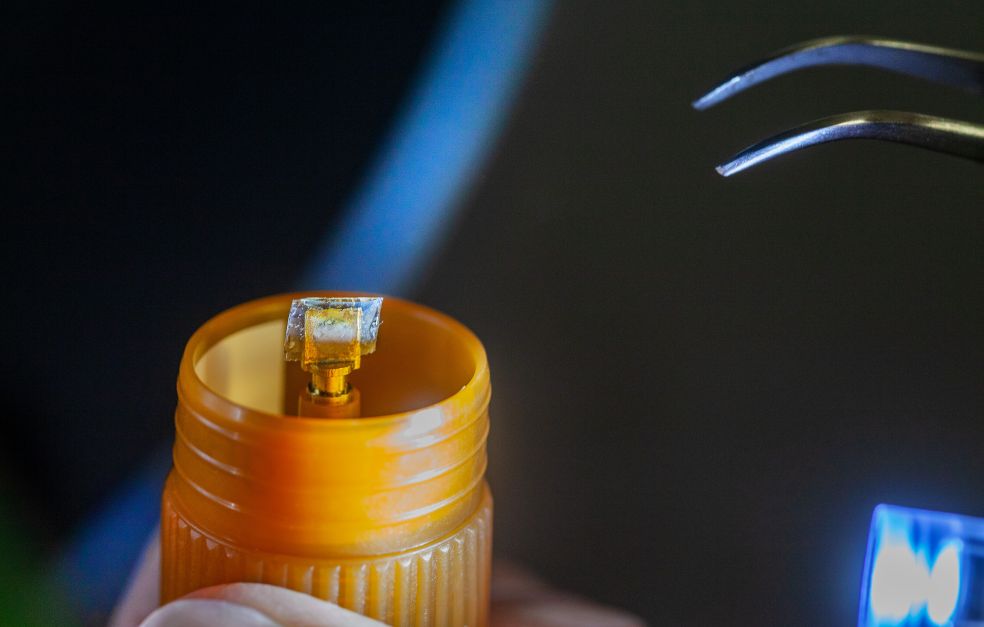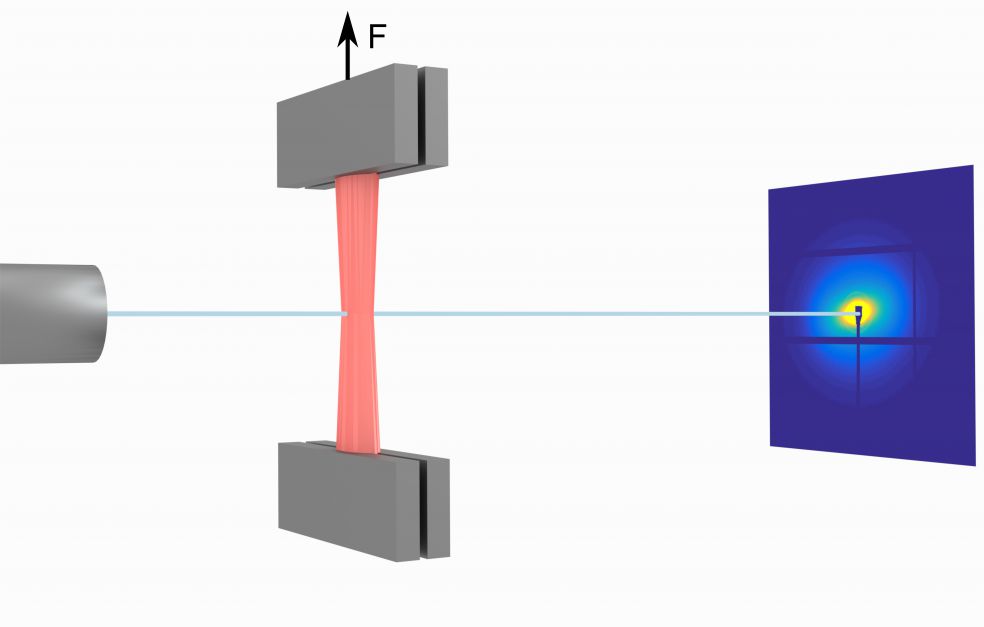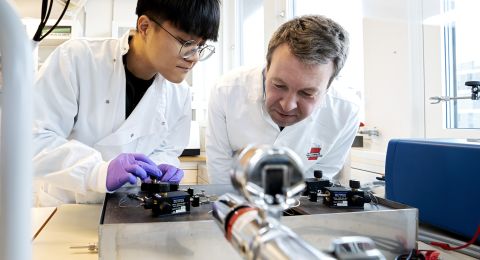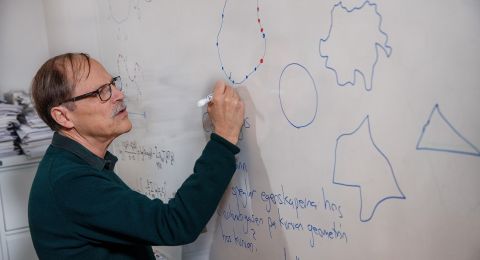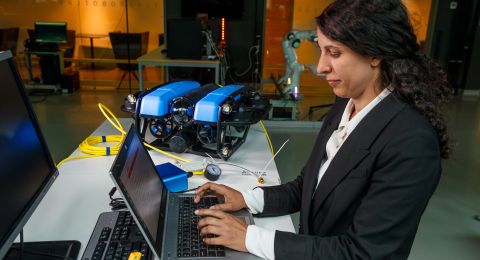A sudden lunge – followed by a sharp pain. Rupture of the Achilles tendon is fairly common in sports such as tennis, badminton, football and soccer. At Lund University, Hanna Isaksson is conducting an in-depth study of collagen, which is what the tendon is made of, to see how it heals under different loading. Ultimately, this may help in understanding the conditions for optimum healing of the tendon.
Hanna Isaksson
Professor of Biomedical Engineering
Wallenberg Academy Fellow 2017
Institution:
Lund University
Research field:
Biomechanics, focusing on mechanobiology and damage mechanisms in bone, cartilage, tendons and ligaments.
Our tendons are rich in collagens, tough and durable materials that make the tissues of the body stable, strong and elastic. Healing of a torn Achilles tendon primarily involves regeneration of collagen fibers. First they are formed at random in the tendon, before gradually aligning themselves in the direction of load.
“If there is insufficient loading on the tendon, it heals more slowly – it takes longer to regain mobility and proper function. But if it is overloaded, it may tear again,” Isaksson explains.
She is researching at the Department of Biomedical Engineering at Lund University. As a Wallenberg Academy Fellow, she will be combining experiments, computer simulations, analyses and new calculation methods to gain a better understanding of how the Achilles tendon reacts to loading, and how this knowledge can be used to improve healing.
Her research field is called biomechanics and mechanobiology, and straddles biology and engineering science. It involves studying how the body reacts and adapts to mechanical loading over time, e.g. during space travel, vigorous training and certain diseases.
“A central feature of the current project is to study collagen in detail, learn more about its mechanics, and how it changes depending on loading. But it may ultimately help us to understand the body’s reaction so we can find ways of helping Achilles tendons to heal,” she says.
Viscoelastic properties in close-up
The function of tendons is to connect muscle to bone; they need to be strong but also elastic. They are supposed to withstand tension when the body moves. A damaged tendon that does not heal properly becomes stiff, and has impaired viscoelastic properties. And it is those properties in particular that Isaksson and her colleagues want to study. They are using experiments as a basis for new calculation models to simulate how tissue can be expected to behave under different stresses.
“We need to perform the experiments to obtain the right numbers for everything. The data we need to make these calculations and develop models is not currently available. When we are ready with the models, the aim is to use them to study processes in other parts of the body as well,” Isaksson explains.
“Being chosen as a Wallenberg Academy Fellow is a really gratifying seal of approval for my research. But most of all it lends stability to our work. Now I will be able to focus on my chosen subject over a long period, and will have sufficient resources to engage more than one researcher on the same project. This is necessary in order to combine experimental research with computer simulations. The kind of funding normally available seldom offers this opportunity.”
Most of the experiments are being performed on tendons from rats. Isaksson will be studying both healthy Achilles tendons, and damaged ones that have healed under different loading. She will analyze how the quantity of different types of collagen changes during the healing process, how much fluid is stored, how the fibers align, and what the implications of all this are for tendon function.
Simultaneous loading and radiation
Isaksson really wants to examine composition, structure and function all at the same time.
“We will be putting loading on the tendons inside a synchrotron light accelerator, such as the MAX IV here in Lund. This will enable us to see how the structure changes while loading is actually happening,” she explains.
She shows how the tendon will be mounted so it can be pulled in different directions during the analysis. Synchrotron light consists of electromagnetic radiation that can be used to study numerous properties in different materials. At present MAX IV is one of the world’s most modern facilities for research of this kind, but Isaksson travels around the world to places where similar experiments can be carried out, Switzerland being one example.
She will also be using synchrotron light sources to perform tomographic studies, which provide multilayered images to produce a 3D picture of the tendon. The goal is to see how the fibers in the tendon move, and are redistributed in relation to each other. This knowledge can then be used to develop new calculation models for how to measure and determine the viscoelastic capacity of a tendon, and the optimal loading on it.
A bridge between medical care and technology
Isaksson grew up with a mother who was a doctor and a father who was an engineer. After high school she studied chemical engineering in Uppsala, where there was program with a pharmaceutical specialization. After a while, however, she changed tack and concentrated on materials technology. She based her thesis on work done in the U.S. under a researcher in biomechanics.
“She was fantastic, and an important role model for me. It was there that I found my research area. When I later secured a doctoral position at a medical research institute in Switzerland, nearly all the people around me were orthopedic surgeons or veterinarians.”
It was in that environment that Isaksson learned the “lingo” – the medical language needed to bridge the gap between the technical expertise of engineers and the needs of patients.
“Sometimes my field falls between two areas – when technical experts don’t think we possess sufficient technical know-how, and doctors don’t think we are sufficiently relevant in medical terms. But in practice, we act as an intermediary between the hospital and the technical faculty. We can solve problems that the two would not have been able to manage alone. It’s really satisfying!”
Text Lisa Kirsebom
Translation Maxwell Arding
Photo Magnus Bergström
